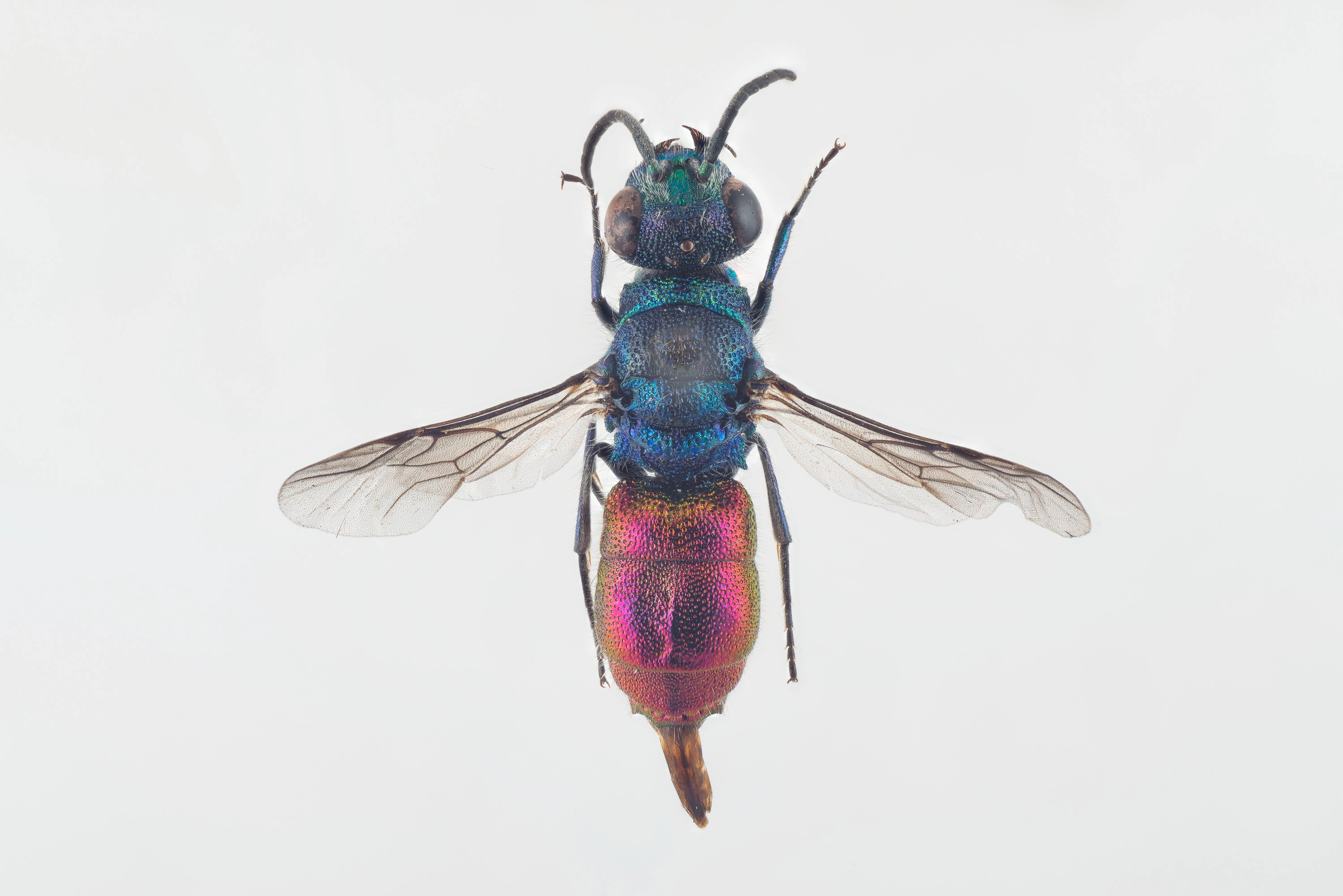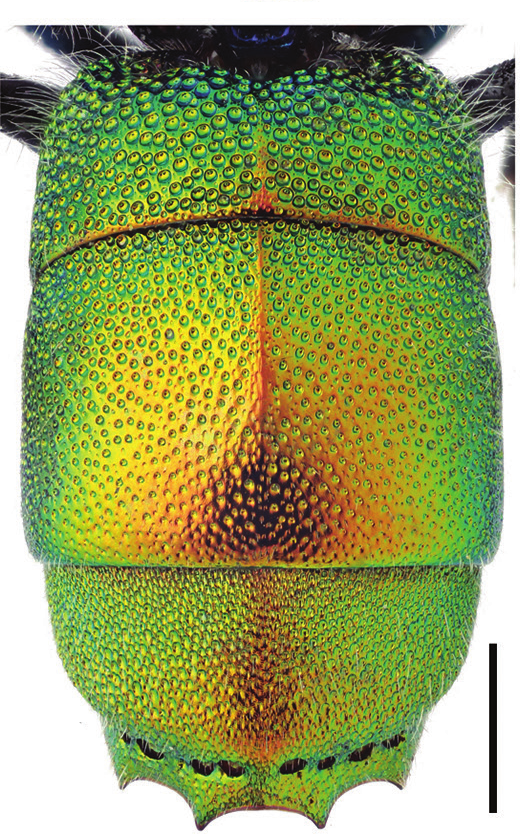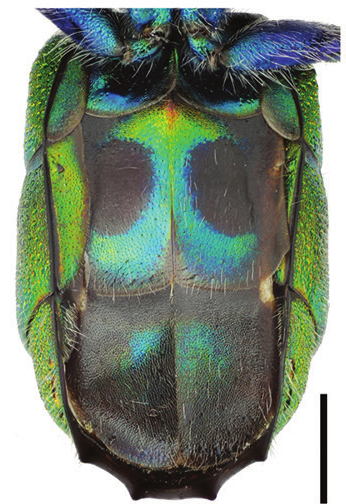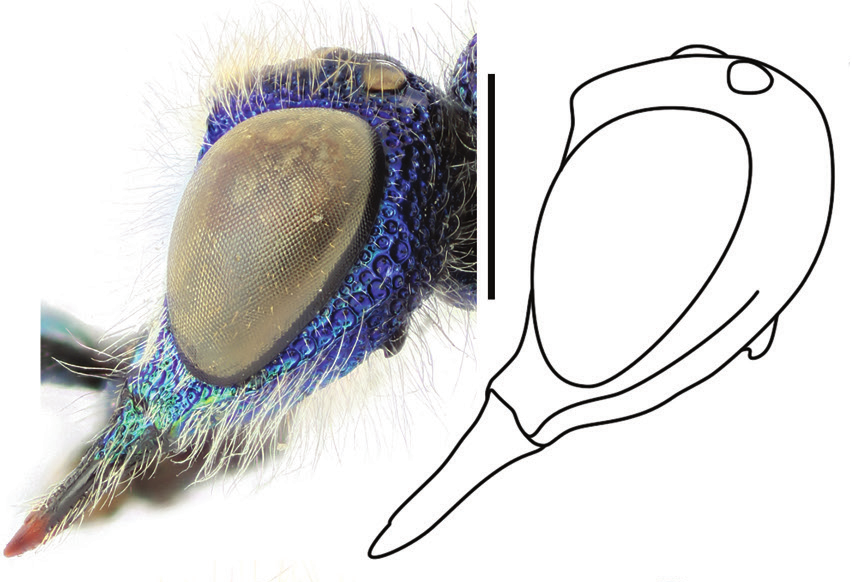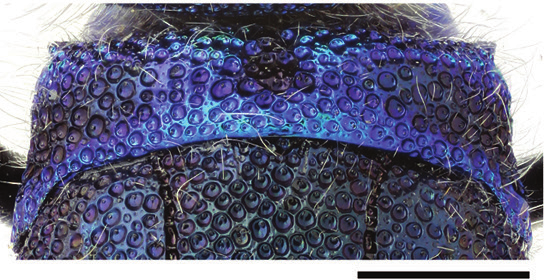Chrysis vanlithi
The species is generally rare, but locally more common in warm habitats along the south-eastern coast of Norway. The hosts are Eumeninae, probably the species Ancistrocerus gazella and A. scoticus. The species has recently been clarified as a good species through DNA-barcoding. Chrysis vanlithi is difficult to identify, however, the pronotum is broader and shorter than similar species.
- Innhold
- Diagnosis
- Distribution
- Biology
Diagnosis
Figure 97
Metasoma, dorsal view: C. vanlithi ♀. Scale 1 mm.
Figure 115
Metasoma, ventral view: C. vanlithi ♀. Scale 1 mm.
Figure 140
Head, lateral view: C. vanlithi ♀. Scale 1 mm.
Figure 159
Pronotum, dorsal view: C. vanlithi ♀. Scale 1 mm.
Length 7–10 mm.
The species is easily confused with other similarly coloured species of the C. ignita group (e.g. C. borealis sp. n. and C. schencki), and the males in particular can be difficult to identify. The combination of several characters (e.g. shape of pronotum and malar space and colouration) should always be used in species determination. The head and mesosoma are dorsally dark blue or nearly black with light blue or greenish reflections mainly on the pronotum (Fig. 159). The tergites are golden red (Fig. 97) and the sternites and legs ventrally greenish (Fig. 115). The pronotum is short (length not more than one fourth of width) (Fig. 159). The mandible is relatively thin (Fig. 140) and the malar space long, approximately as long as broad in the female (Fig. 140). F1 is black without a metallic sheen, and the ovipositor is narrow (as in Fig. 92).
Distribution
Denmark, Norway, Sweden. Rare. Only one confirmed record is known from Denmark, four from southern Sweden (Scania, Bohuslän and Stockholm archipelago) and more than ten from southern Norway.
West Palearctic: from central and northern Europe to southwestern Asia (Linsenmaier 1997).
Be aware that the records present in the GBIF map may be misleading for some countries due to unrevised data sets or missing information.
GBIF Taxon: Chrysis vanlithi Linsenmeier, 1959Biology
Habitat: all Nordic specimens have been found in coastal localities. Adults are usually found flying near rocks and log walls (Linsenmaier 1997, our own obs.).
Flight period: June to July (most Nordic observations are from June).
Host: possibly Ancistrocerus gazella (Panzer) (our own obs.) or Ancistrocerus scoticus (Curtis) (Vespidae) (van der Smissen 2001).
